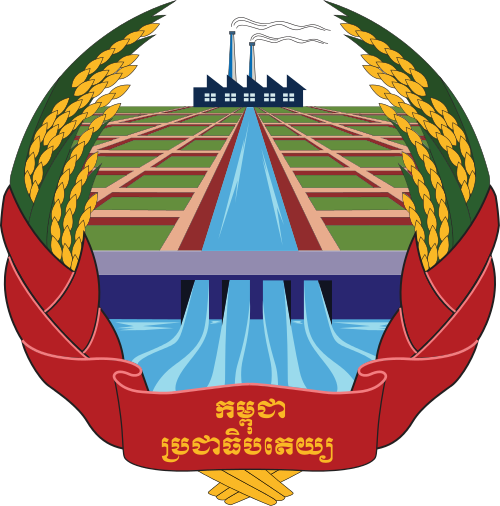The Communist Party of Kampuchea (CPK) emerged from a tumultuous political landscape in Cambodia, shaped by revolutionary fervor and a desire for independence from colonial rule. As the governing body during the Khmer Rouge regime from 1975 to 1979, the CPK implemented an ideology that was radical, violent, and deeply rooted in its interpretation of Marxism-Leninism. This article delves into the core tenets of the CPK’s ideology during its rule, touches on its historical evolution, and examines the ambitious, albeit disastrous, Super Great Leap Forward initiative aimed at modernizing the nation.
Early Years and Development of CPK Ideology
The CPK’s roots can be traced back to the 1940s and 1950s when it operated under the umbrella of the Indochinese Communist Party. It gained a distinct identity through leaders such as Pol Pot, Khieu Samphan, and Ieng Sary, who helped shape its ideological framework. The party initially adopted a nationalist and anti-colonial stance, focusing on Cambodian independence and the belief that the peasantry held the key to revolution.
During the early years, the CPK articulated its vision around the following key themes:
1. Nationalism and Anti-Imperialism
The CPK framed its struggle as a fight against foreign domination, particularly that of the United States and France. This ideology garnered support among the rural population, who viewed the CPK as a means to reclaim national sovereignty. The emphasis on nationalism would later justify brutal measures against perceived enemies, including anyone associated with foreign influence.
2. Peasant-Centric Revolution
The CPK viewed the Cambodian peasantry as the vanguard of the revolution, rejecting the urban working class as the primary revolutionary force. The party believed that true socialism could only be achieved through the agrarian transformation of society, leading to policies that prioritized agricultural collectivization and rural development.
Ideology During the Khmer Rouge Government
Following their victory in April 1975, the Khmer Rouge implemented their ideology with an alarming degree of fervor. The CPK’s ideology during this period can be summarized by the following principles:
1. Radical Agrarian Socialism
The CPK aimed to establish an agrarian socialist state by forcibly evacuating urban centers and relocating the population to the countryside. This forced labor policy sought to create a self-sufficient agricultural economy, often disregarding human rights and individual freedoms. The radical social engineering resulted in widespread suffering, famine, and death.
2. Class Struggle and Purges
The regime engaged in a violent class struggle, targeting intellectuals, professionals, and ethnic minorities as enemies of the state. The CPK’s paranoia led to purges that resulted in the execution of thousands, justified by the belief that these groups threatened the revolution. This culture of fear served to consolidate power and maintain strict ideological conformity.
3. Self-Reliance and Economic Autarky
The CPK’s emphasis on self-reliance meant rejecting foreign aid and investment. Instead, the regime promoted autarky, believing that Cambodia could sustain itself through its agricultural output. This policy was evident in the Khmer Rouge’s attempts to mobilize the population for labor-intensive agricultural production, often at the expense of basic human needs.
4. Cultural Revolution and Ideological Indoctrination
The Khmer Rouge sought to eradicate traditional customs and beliefs through a cultural revolution. This effort included the suppression of religion, the closure of schools, and the promotion of radical ideological indoctrination. The regime aimed to create a new Cambodian identity that aligned with its revolutionary goals, often resorting to propaganda and coercion.
The Super Great Leap Forward
In 1976, the CPK introduced the Super Great Leap Forward, an ambitious campaign designed to rapidly transform Cambodia into a modern, industrialized nation. Modeled after China’s Great Leap Forward, the initiative aimed to generate cash through forced agricultural production and exportation. The primary goal was to finance the modernization of the country while consolidating the party’s control.
1. Cash Grab Strategy
The Super Great Leap Forward was fundamentally a cash grab, framed as a means to create a self-sustaining economy. The CPK believed that by increasing agricultural production, particularly of rice and rubber, they could generate the revenue needed to invest in industrial projects. This led to the prioritization of cash crops over subsistence farming, further exacerbating food shortages and famine.
2. Brutal Implementation
The execution of the Super Great Leap Forward was characterized by harsh measures, including forced labor and extreme quotas. Villagers were subjected to grueling work conditions, and the CPK’s unrealistic expectations led to widespread crop failures. Instead of achieving economic growth, the campaign resulted in the deaths of countless Cambodians due to starvation and overwork.
3. Ideological Justification
The CPK framed the Super Great Leap Forward as part of its broader revolutionary ideology, insisting that sacrifices were necessary for the greater good of the nation. This justification masked the disastrous consequences of the initiative, as the regime prioritized its ideological goals over the welfare of the Cambodian people.
Transition to the Party of Democratic Kampuchea
After the Khmer Rouge was ousted by Vietnamese forces in January 1979, the CPK rebranded itself as the Party of Democratic Kampuchea (PDK). Although the name suggested a shift toward democratic socialism, the fundamental tenets of the party’s ideology remained intact. The PDK continued to espouse the same radical principles, emphasizing agrarian socialism and anti-imperialism while maintaining strict ideological control over its members.
1. Continued Rhetoric of Revolution
Even in its rebranded form, the PDK maintained its revolutionary rhetoric, portraying itself as a defender of Cambodian sovereignty against foreign aggression. This narrative enabled the party to continue garnering support among segments of the population that had experienced the chaos of the previous regime.
2. Lack of Genuine Reform
Despite the new name, the PDK showed little interest in genuine reform or the promotion of democratic principles. The party’s leadership remained entrenched, and dissent was not tolerated. The PDK’s governance continued to reflect the oppressive and violent legacy of the Khmer Rouge, illustrating that the ideological foundations of the regime had not fundamentally changed.
Conclusion
The ideology of the Communist Party of Kampuchea was marked by radical agrarian socialism, anti-imperialism, and a commitment to class struggle, resulting in devastating consequences for the Cambodian population during the Khmer Rouge regime. The introduction of the Super Great Leap Forward, framed as a modernization effort, ultimately proved to be a catastrophic cash grab that exacerbated suffering and starvation.
As the party transitioned into the Party of Democratic Kampuchea, its core ideological principles persisted, demonstrating a continuity of oppressive governance that defined both eras. The legacy of the CPK’s ideology serves as a stark reminder of the dangers posed by radical political movements and the profound impact they can have on society.









